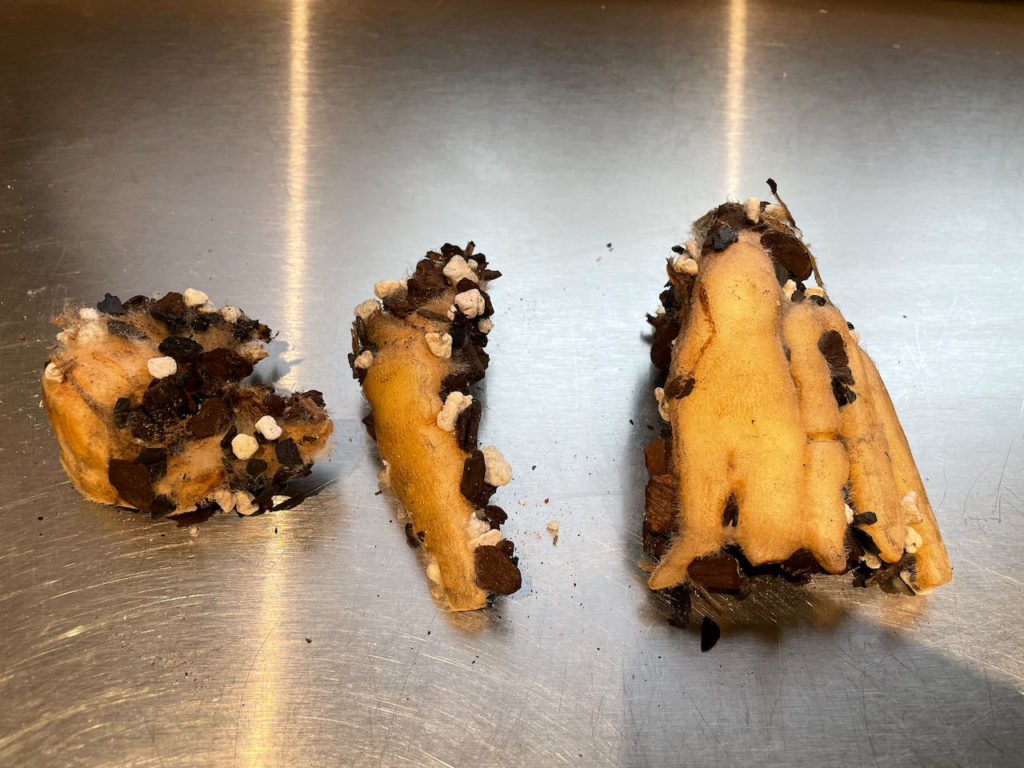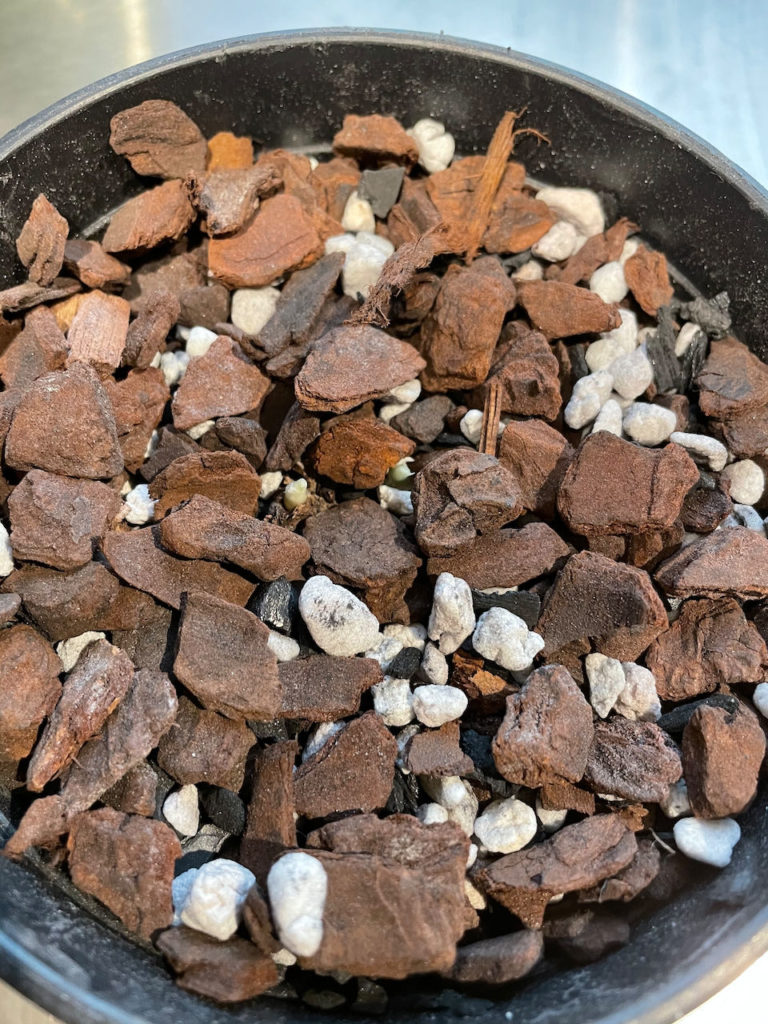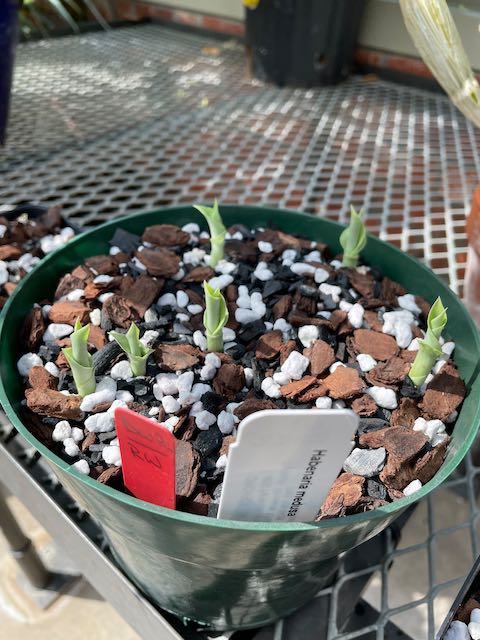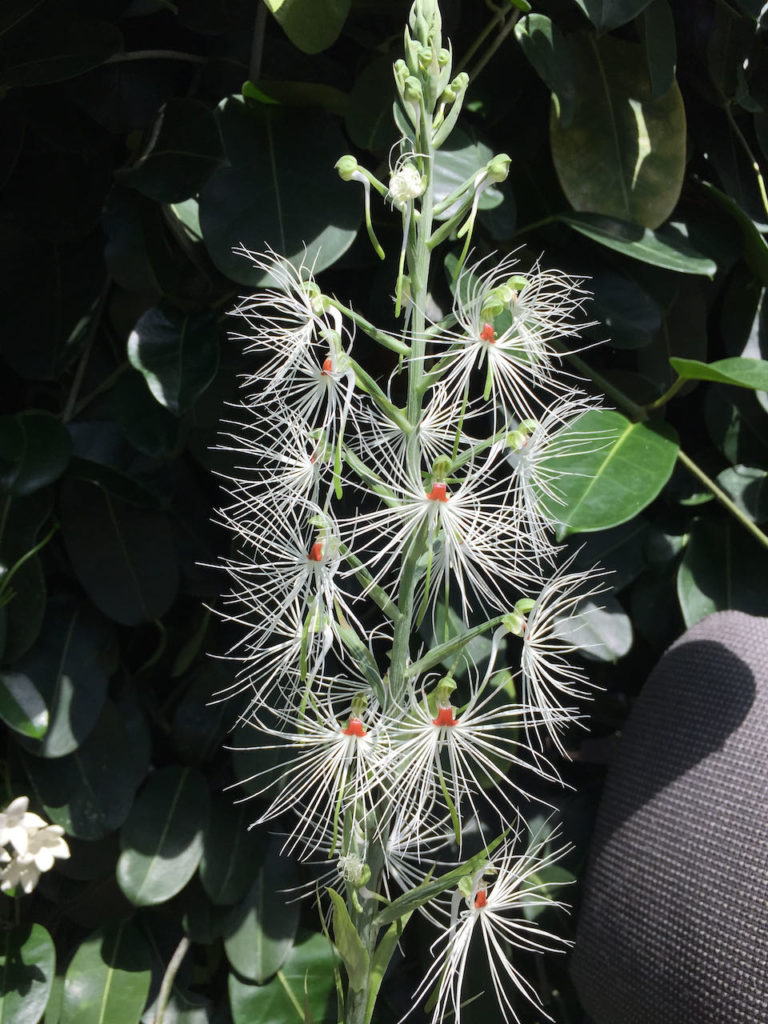Habenaria medusa is unusual among orchids in that it goes completely dormant over the winter. Following flowering, which in my warm glasshouse in Oklahoma tends to be August–October, the stem and foliage slowly die down, leaving underground tubers to lie dormant over winter. It is critical not to water the dormant tubers during this period of dry winter rest (DWR-RW), generally November–March, when temperatures are kept at 60°F nights and 75–80°F days. I drizzle a minute amount (about 2 tablespoons) of clear, reverse osmosis water around the perimeter of the pot once a month during this phase, just enough to raise the humidity within the potting medium so the tubers don’t desiccate.
About mid-March, the tubers begin to sprout the new season’s growth, and that is a good time to repot them into clean pots and fresh potting medium. Typically, I find that there are multiple tubers in the pot, where I had potted only one the preceding year. For example, last year’s two pots of single tubers produced five tubers to be freshly potted into five pots this year! The tubers are fairly long and fleshy, about the size of a person’s index finger, thus a narrow, deep pot, e.g. 4″ diameter × 4 ½” deep, is a good choice. I mix 2 parts Power Orchiata + 1 part #3 perlite + 1 part fine biochar + 1 tsp. ground oyster shell, and pot each tuber individually and vertically with the new shoot growth barely exposed. I grow the plants in bright diffuse to light shade (BD–LS) in my warm glasshouse, where summer temperatures are 70–75°F nights and 85–90°F days with 50–60% relative humidity nights and 70–80% r.h. days.

On the day after potting, I water the potting medium with clear, reverse osmosis water, being careful not to get water on the emerging shoot. For the next several weeks, I water the developing plant sparingly, only about once every 10–14 days. Once the shoot has grown and the leaves have extended to the edge of the pot, I begin watering the plants daily using weak fertilized RO water per my fertilizing schedule. Habenaria medusa is a terrestrial orchid native to Java, Sumatra, Sulawesi and Borneo, where it is accustomed to a monsoon climate and receives ample water during its rapid growth and flowering.


This orchid species is especially phototropic, i.e. it grows toward light, thus it is important to turn the plant to keep it growing straight. I turn my Habenaria medusa after each watering, using the label’s position as my indicator. Once the flower buds are distinctly formed, I discontinue turning so that the flower orientation will not be skewed. The inflorescence flowers acropetally, from base to apex, with each flower lasting several days. The inflorescence continues growing new buds apically and flowering over about three months, beginning in late summer.

If you’re a member of the American Orchid Society, there is an excellent members-only recording of the “How to Grow Habenarias” webinar by Jim Heilig, posted on the AOS website. For further information about temperature, light, and watering groups, see Oklahoma Orchid Society’s Pictorial Culture Guide.
